Tractorettes

In the year 1942, World War II was at its peak. America’s men were at war, which caused a disastrous labor shortage on the home front. Farmers made up 18% of the labor force with slightly more than 6 million farms scattered across the nation. Farms were short of able bodies to help grow and harvest their crops with many boys and men off helping Uncle Sam win the war.
Agricultural exports equaled $2.42 billion a year. This was an industry that fed America and provided a significant economic impact; America couldn’t afford to have the farm fail. During these trying years, women undertook the crucial job of caring for the crops. Food shortages at home and on enemy grounds were prevented due to the efforts of American women.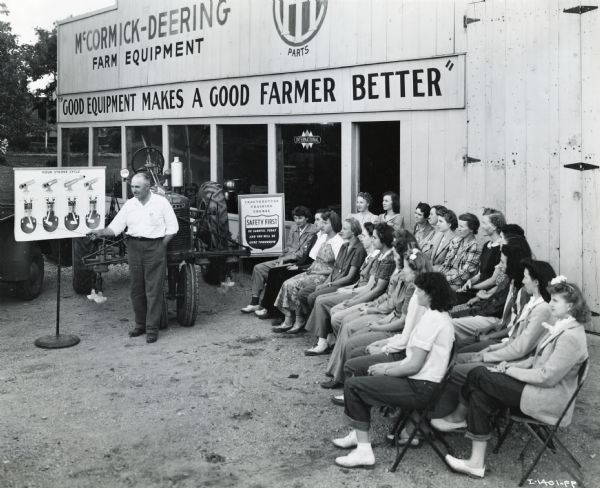
Women begin classes to learn how to operate and repair farm machinary. Wisconsin Historical Society/50927
The Bureau of Agriculture estimates that between April 1940 and July 1942, more than two million men left their agricultural jobs to put on America’s uniform. Women stepped up to alleviate the labor crisis in rural America. By July 1943 three million women were working on farms making up 27% of the labor force. The other two-thirds of agricultural workers included young people and foreigners that migrated to the United States from Canada, Mexico and Central America. An even more startling statistic shows that the percent of women working on farms jumped from 8.0% in 1940 to 22.4% in 1945. Although most of these were rural women that already lived on a farm, the USDA estimates that one and a half million non-farm women were in agricultural work between 1943 and 1945.
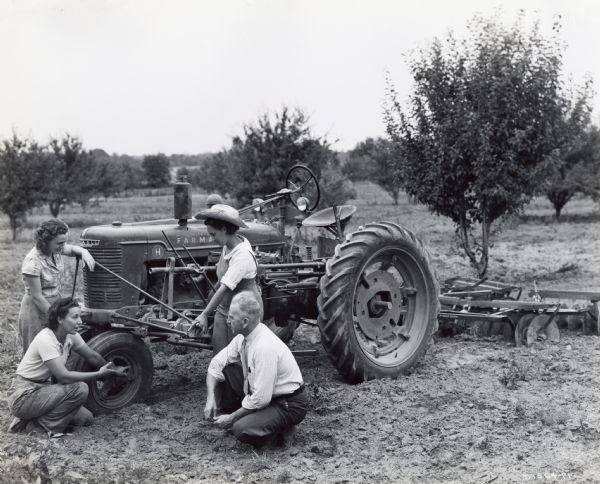
A few Jewish women in New Jersey learn about this Farmall H from Wood Hendrickson, a International Harvester dealer. Wisconsin Historical Society/50950
In 1942, the International Harvester Company launched a program to provide these women with the resources to be successful in their new profession. In April, International Harvester revealed the tractorette program. The announcement came by way of the periodical magazine, Harvester World. The idea was to train women to use farm equipment including tractors and harvesters, to keep farms functioning and prosperous. Boasting tag lines like, “Every tractorette trained spares a man for man’s war work,” and, “It’s going to be popular to be a tractorette,” women across the nation signed up to do their part. “The women of America always have been closely associated with our war effort in the past and they will not fail to do their part now,” Fowler McCormick, company president at the time, was quoted. 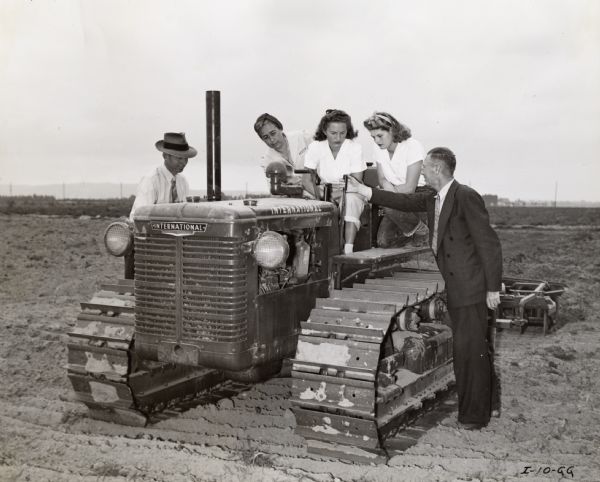
Three women are get last instruction before their final field test as tractorettes-in-training. Wisconsin Historical Society/50923
This was the second program International Harvester had undertaken in an effort to curb the labor shortage on American farms. In the previous year, International Harvester partnered with 2,500 dealerships to train out-of-school youths in truck and tractor operation and maintenance. The tractorette program would be similar in that dealers would be responsible for all training. The women would be selected on the basis of qualification, need and most importantly their earnestness to become a tractorette. The training course was free and went into great detail. It was thought that farm women would be easy to teach these topics of farm operations because they were already seasoned for farm life. The tractorettes-in-training would be taught basic skills in repairing and servicing of the machines, diagnoses of mechanical problems and proper attaching and setting up of necessary implements.
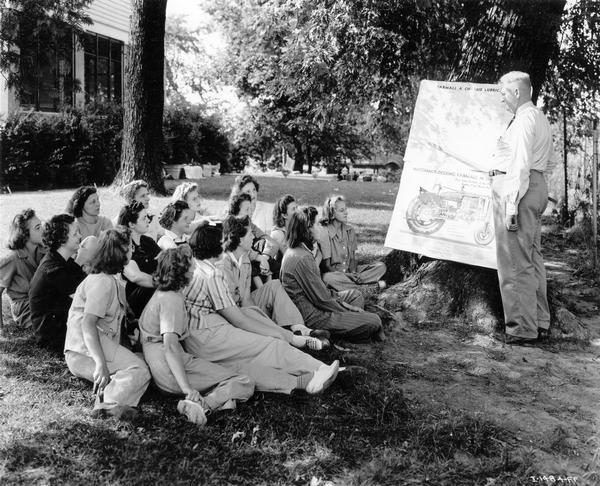
These women listen to a lecture on the maintenance of Farmall A and Farmall M tractors. Wisconsin Historical Society/70442
The program was taught in eight “easy” lessons taught over three weeks. The women weren’t expected to become farming experts, but they would be equipped with the know-how to carry out the fundamental jobs on the farm. Safety was the first and most important lesson. Beginning in the classroom, dealers and experienced machine operators spent days ensuring the women enrolled in the program knew how to safely operate and troubleshoot the equipment they would be using on a daily basis. The safety classes taught the importance of thinking before acting and dressing appropriately for the work at hand. After a few lessons on operation and maintenance, their training was continued in the field. The hardest task of plowing would become the first field lesson. It was of the thought that once women were able to make straight and even furrows, there wasn’t much else that they couldn’t learn how to do on a tractor.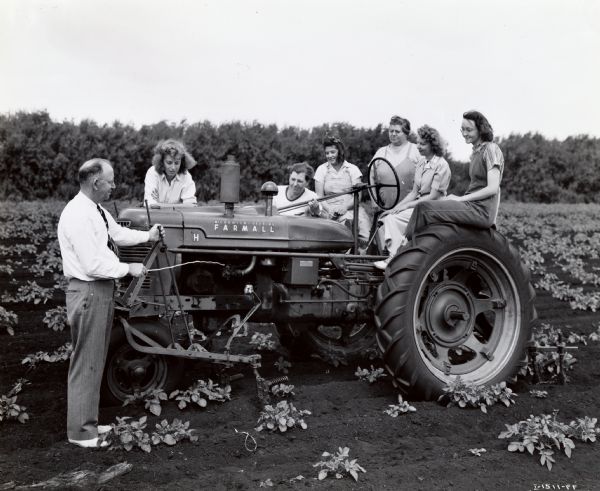
A group of women in a tractorette class gather around a Farmall tractor for demonstrations. Wisonconsin Historical Society/50935
The efforts of the dealers and women were described as patriotic. Outsiders were skeptical if the women actually left the program skilled in farm machinery. One machinery expert, Bob Fowinkle, said of the women, “the way they handled the tractors was startling to the men who had set out to teach them.” In an effort to stump the tractorettes-in-training, Fowinkle sabotaged a few of the test tractors to test the women’s knowledge. Secretly, he poured water into the gas line of one, put bad spark plugs in another and jimmied the distributer on a third. When the women were asked to start the machines.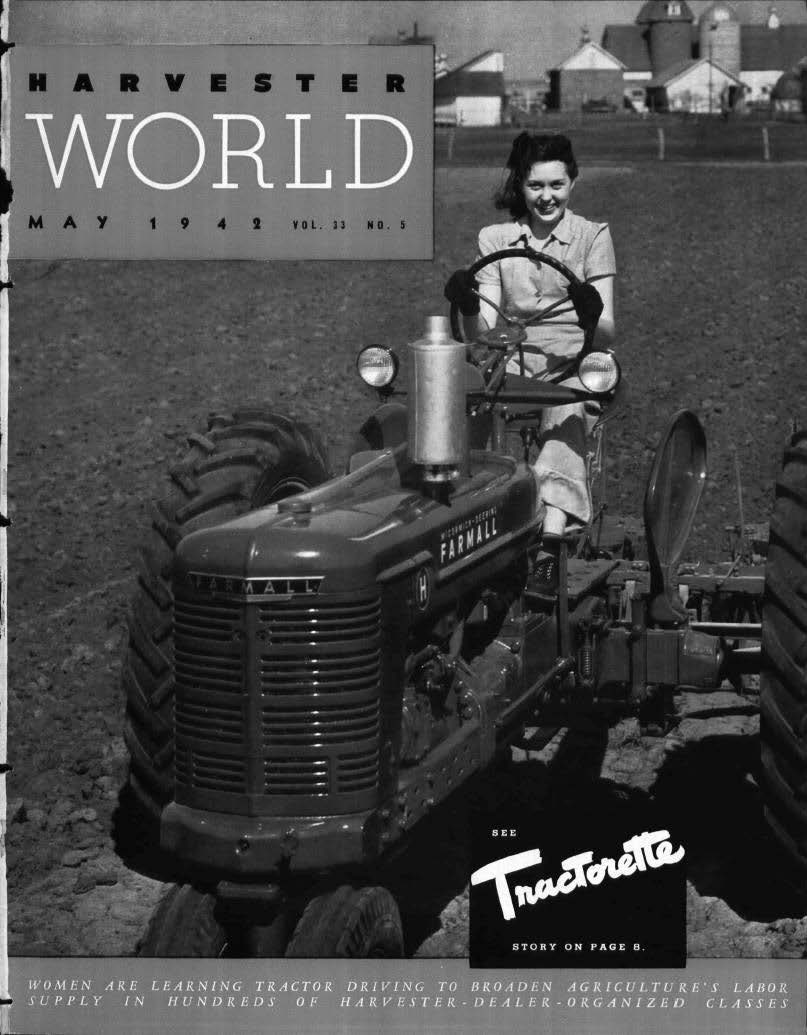
The tractorette program graced the May 1942 cover of Harvester World. Wisconsin Historical Society/15612
Harvester World followed the program each month with one or two pages on the progress dealerships made. The reports indicated that there was an increase in interest from women and girls to not only help out while the men were away, but to gain useful skills that allowed them to work in a man’s world. By the fall wheat harvest, there were gaggles of graduates ready to take on their harvesting season with their newly sharpened skills and love for the land.
As the program gained popularity, classes outside of IHC dealerships began to pop up. The University of Wisconsin, Madison and Minot, North Dakota Teachers’ College both hosted tractorette courses. The government established a similar program called the Women’s Land Army, which provided training for women to join the movement. Women proved to be unafraid of getting dirty, greasy or worn out, and thousands of tractorettes took their place in the fields. These women helped to provide Food for Freedom and changed the farming scenery forever.
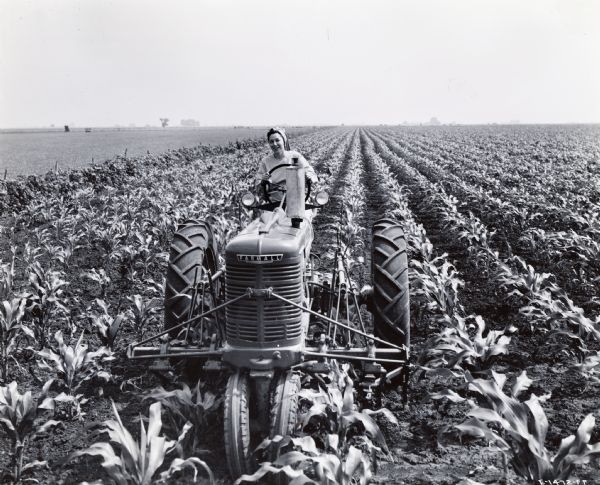
A woman drivers a tractor through her crops after successfully completing a tractorette training program. Wisoconsin Historical Society/50955

